2-甲基-1,3-二氧戊环

2-甲基-1,3-二氧戊环结构式

|
常用名 | 2-甲基-1,3-二氧戊环 | 英文名 | 1,3-Dioxolane,2-methyl- |
|---|---|---|---|---|
| CAS号 | 497-26-7 | 分子量 | 88.10510 | |
| 密度 | 0.99 | 沸点 | 82-83 °C(lit.) | |
| 分子式 | C4H8O2 | 熔点 | N/A | |
| MSDS | 中文版 美版 | 闪点 | 28 °F | |
| 符号 |


GHS02, GHS07 |
信号词 | Danger |
2-甲基-1,3-二氧戊环用途用于制聚合物材料。 |
| 中文名 | 2-甲基-1,3-二氧戊环 |
|---|---|
| 英文名 | 2-Methyl-1,3-dioxolane |
| 中文别名 | 2-甲基-1,3-二噁茂烷 | 乙醛乙二醇缩醛 | 2-甲基-1,3-二茂烷 | 2-甲基-1,3-二恶茂烷 |
| 英文别名 | 更多 |
| 密度 | 0.99 |
|---|---|
| 沸点 | 82-83 °C(lit.) |
| 分子式 | C4H8O2 |
| 分子量 | 88.10510 |
| 闪点 | 28 °F |
| 精确质量 | 88.05240 |
| PSA | 18.46000 |
| LogP | 0.37920 |
| 外观性状 | 透明液体 |
| 蒸汽压 | 341.95mmHg at 25°C |
| 折射率 | n20/D 1.398(lit.) |
| 储存条件 | 密封保存,放置在通风,干燥的环境中 |
| 稳定性 | 按规格使用和贮存,不会发生分解,避免与氧化物接触 |
| 水溶解性 | 水溶性:完全混溶 |
| 分子结构 | 1、 摩尔折射率:21.75 2、 摩尔体积(m3/mol):90.7 3、 等张比容(90.2K):208.6 4、 表面张力(dyne/cm):27.9 5、 极化率(10 -24 cm 3):8.62 |
| 计算化学 | 1.疏水参数计算参考值(XlogP):0.2 2.氢键供体数量:0 3.氢键受体数量:2 4.可旋转化学键数量:0 5.互变异构体数量:无 6.拓扑分子极性表面积18.5 7.重原子数量:6 8.表面电荷:0 9.复杂度:38.8 10.同位素原子数量:0 11.确定原子立构中心数量:0 12.不确定原子立构中心数量:0 13.确定化学键立构中心数量:0 14.不确定化学键立构中心数量:0 15.共价键单元数量:1 |
| 更多 | 1. 性状:无色液体 2. 密度(g/ m3,25/4℃):0.9811 3. 相对蒸汽密度(g/cm3,空气=1):3.03 4. 熔点(ºC):78-81 5. 沸点(ºC,常压):未确定 6. 沸点(ºC,5.2kPa):未确定 7. 折射率:未确定 8. 闪点(ºF):未确定 9. 比旋光度(º):未确定 10. 自燃点或引燃温度(ºC):未确定 11. 蒸气压(kPa,25ºC):未确定 12. 饱和蒸气压(kPa,60ºC):未确定 13. 燃烧热(KJ/mol):未确定 14. 临界温度(ºC):未确定 15. 临界压力(KPa):未确定 16. 油水(辛醇/水)分配系数的对数值:未确定 17. 爆炸上限(%,V/V):未确定 18. 爆炸下限(%,V/V):未确定 溶解性:易溶于水 |
|
||||||||||||||||||||||||||||||||||||||||||||||||||||||||||||||||||||||||||||||||||||||||||||||||||||||||||||||||||||||||||||||||||||||||||||||||||||||||||||||||||||||||||||||||||||||||||||||||||||||||||||||||||||||||||||||||||||||||||||||||||||||||||
|
2-甲基-1,3-二氧戊环毒理学数据: 1、皮肤/眼睛刺激数据:标准Draize测试兔子直接接触皮肤:500mg/24HREACTION SEVERITY:轻度; 标准Draize测试兔子直接接触眼睛:20mg/24HREACTION SEVERITY:中度; 2、急性毒性:大鼠经口LD50:2900mg/kg,兴奋行为-抗精神病药; 大鼠经吸入LC50: 80 gm /m3,肌肉无力,呼吸困难; 小鼠经口LD50:3500mg/kg,除肌肉无力,呼吸困难; 小鼠吸入LC: 59 gm /m3,除肌肉无力,呼吸困难; 2-甲基-1,3-二氧戊环生态学数据: 该物质对环境可能有危害,对水体应给予特别注意。 |
| 符号 |


GHS02, GHS07 |
|---|---|
| 信号词 | Danger |
| 危害声明 | H225-H319 |
| 警示性声明 | P210-P305 + P351 + P338 |
| 个人防护装备 | Eyeshields;Faceshields;full-face respirator (US);Gloves;multi-purpose combination respirator cartridge (US);type ABEK (EN14387) respirator filter |
| 危害码 (欧洲) | F,Xi |
| 风险声明 (欧洲) | 11-36 |
| 安全声明 (欧洲) | S16-S26 |
| 危险品运输编码 | UN 1993 3/PG 2 |
| WGK德国 | 2 |
| RTECS号 | JI3509000 |
| 包装等级 | II |
| 危险类别 | 3 |
| 2-甲基-1,3-二氧戊环上游产品 10 | |
|---|---|
| 2-甲基-1,3-二氧戊环下游产品 9 | |
暂无
|
Muscarinic cholinergic receptors in the embryonic chick heart: interaction of agonist, receptor, and guanine nucleotides studied by an improved assay for direct binding of the muscarinic agonist [3H]cismethyldioxolane.
Mol. Pharmacol. 32(1) , 230-40, (1987) Muscarinic agonist binding has been studied by the indirect method of competition between binding of agonist and 3H-antagonist. Studies of 3H-agonist binding have either been complicated by high level... |
|
|
Potency ratio for the inhibition of 3H-QNB and 3H-cis-methyldioxolane binding predicts agonist or antagonist activity on muscarinic receptors.
Methods Find. Exp. Clin. Pharmacol. 10(10) , 619-21, (1988) 3H-Quinuclidinyl benzylate (3H-QNB) and 3H-cis-methyldioxolane (3H-CD) binding to cholinergic muscarinic receptors have been carried out on the same membrane preparation from the rat brain cortex. Inh... |
|
|
Binding studies with [3H]cis-methyldioxolane in different tissues. Under certain conditions [3H]cis-methyldioxolane labels preferentially but not exclusively agonist high affinity states of muscarinic M2 receptors.
Naunyn Schmiedebergs Arch. Pharmacol. 335(4) , 372-7, (1987) Special conditions--tricine buffer containing Ca2+ and Mg2+, 22 degrees C (TCM)--allow to label a much higher proportion of muscarinic receptors by [3H]cis-methyldioxolane (CD) than hitherto described... |
| 2-METHYL-1,3-DIOXOLANE |
| Acetaldehyde Ethylene Acetal |
| EINECS 207-841-4 |
| MFCD00003210 |

 CAS号201230-82-2
CAS号201230-82-2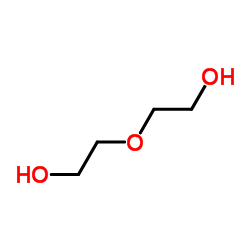 CAS号111-46-6
CAS号111-46-6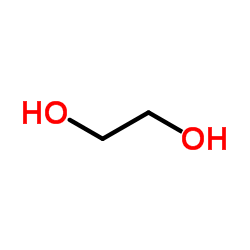 CAS号107-21-1
CAS号107-21-1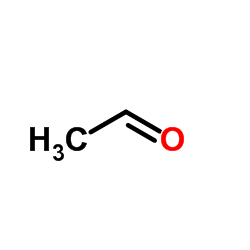 CAS号75-07-0
CAS号75-07-0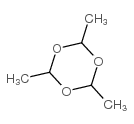 CAS号123-63-7
CAS号123-63-7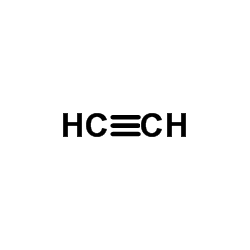 CAS号74-86-2
CAS号74-86-2 CAS号75-21-8
CAS号75-21-8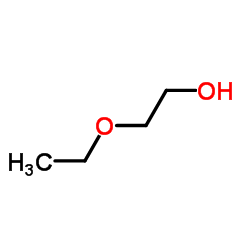 CAS号110-80-5
CAS号110-80-5 CAS号108-05-4
CAS号108-05-4 CAS号546-67-8
CAS号546-67-8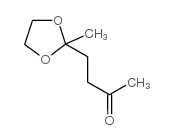 CAS号33528-35-7
CAS号33528-35-7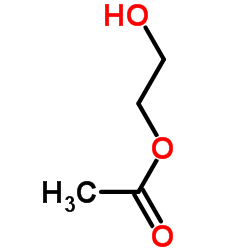 CAS号542-59-6
CAS号542-59-6 CAS号542-58-5
CAS号542-58-5 CAS号141-78-6
CAS号141-78-6 CAS号13623-91-1
CAS号13623-91-1![3,7-dichlorotricyclo[4.1.0.02,4]heptane结构式](https://image.chemsrc.com/caspic/085/105148-92-3.png) CAS号105148-92-3
CAS号105148-92-3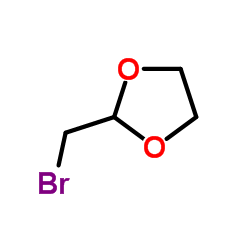 CAS号4360-63-8
CAS号4360-63-8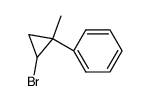 CAS号55091-64-0
CAS号55091-64-0
